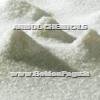ANMOL CHEMICALS
Featured Products
Highest quality standards are achieved through the implementations of latest technology, decades of experience and everlasting moral values , which have helped us to retain our customers as well as multiply them.
Welcome to ANMOL CHEMICALS
Ammonium Bicarbonate

A fine, white, crystalline powder or white crystals, slightly hygroscopic, freely soluble in water, practically insoluble in alcohol.
It volatilizes rapidly at 60C. The volatilization takes place slowly at ambient temperatures if the substance is slightly moist. It is in a state of equilibrium with ammonium carbamate.
Citric Acid

One of the most common acids in the world, citric acid is responsible for giving fruits like lemons and limes their characteristic tartness. Pure citric acid is available as a crystalline powder at gourmet cooking stores. In addition to giving any food item a citrus tang, citric acid crystals can be dissolved to make a citric acid solution, which you can use as a cleaning agent or to develop photos and other uses.
Calcium Phosphate

Calcium Phosphate, Monobasic, occurs as white crystals or granules or as a granular powder. It is anhydrous or contains one molecule of water of hydration, but because of its deliquescent nature, more than the calculated amount of water may be present. It is sparingly soluble in water and is insoluble in alcohol.
Function: Buffer; dough conditioner; firming agent; leavening agent; nutrient; yeast food; sequestrant.
Calcium Oxide

Quick Lime or Calcium Oxide occurs as hard, white or gray-white masses or granules, or as a white to gray-white powder. One gram dissolves in about 840 mL of water at 25° and in about 1740 mL of boiling water. It is soluble in glycerin but insoluble in alcohol.
Function: pH control agent; nutrient; dough conditioner; yeast food.
Gentian Violet

Gentian Violet contains not less than 96.0 percent and not more than 100.5 percent of gentian violet (C25H30ClN3), calculated on the anhydrous basis.
Chromatographic Purity: 96-101%
Water: Not more than 7.5%.
Residue on ignition: Not more than 1.5%.
Alcohol-insoluble substances— Not more than 1.0% of insoluble residue remains.
Arsenic— The limit is 0.001%.
Lead—The limit is 0.003%.
Zinc— Not more than 0.05%.
Maleic Acid

Maleic acid is an industrial raw material for the production of glyoxylic acid by ozonolysis. It is mainly used as a precursor to fumaric acid.
Maleic acid may be used to form acid addition salts with drugs to make them more stable, such as indacaterol maleate. It is used for making Maleate Salts of Bulk-Drugs like Pheneramine Maleate, Chloropheneramine Maleate and others. It is also used to prevent rancidity in oils. Maleic acid has become a new acidulant in food and beverage industry. It can enhance special fruit aroma and improve the taste in food and beverage. At the present time Maleic acid is mainly used in syrup, ready-tea, orange juice, sports beverage and other fortified syrup and food. In addition, Maleic acid is also used to manufacture unsaturated polyester resin, pesticide, tartaric acid, fumaric acid, succinic acid, DL-Malic acid, dyeing auxiliary and preservative grease.
It is commercially available as the crystalline material or as an aqueous solution in water (40%). It may contain fumaric acid (0.1%) and water (less than 0.5%) as impurities.
Methylene Blue

C16H18ClN3S·3H2O 373.90
Phenothiazin-5-ium, 3,7-bis(dimethylamino)-, chloride, trihydrate.
C.I. Basic Blue 9 trihydrate [7220-79-3]
Anhydrous 319.86 [61-73-4]
Methylene Blue contains not less than 98.0 percent and not more than 103.0 percent of C16H18ClN3S, calculated on the dried basis.
Identification: Infrared Absorption 197K .
Potassium Chloride

Potassium Chloride occurs as colorless, elongated, prismatic, or cubical crystals, or as a white, granular powder. It is stable in air. Its solutions are neutral to litmus. It may contain up to 1.0% (total) of suitable food-grade ant-caking, free-flowing, or conditioning agents such as calcium stearate or silicon dioxide, either singly or in combination. One gram dissolves in 2.8 mL of water at 25°, and in about 2 mL of boiling water. Potassium Chloride containing anti-caking, free-flowing, or conditioning agents may produce cloudy solutions or dissolve incompletely. It is insoluble in alcohol.
Function: Nutrient; gelling agent; salt substitute; yeast food.
Potassium Hydroxide

Potassium Hydroxide occurs as white or nearly white pellets, flakes, sticks, fused masses, or other forms. Upon exposure to air, it readily absorbs carbon dioxide and moisture, and it deliquesces. One gram dissolves in 1 mL of water, in about 3 mL of alcohol, and in about 2.5 mL of glycerin. It is very soluble in boiling alcohol.
Sodium Propionate

Sodium Propionate occurs as white or colorless, transparent crystals or as a granular, crystalline powder. It is hygroscopic in moist air. One gram is soluble in about 1 mL of water at 25°, in about 0.65 mL of boiling water, and in about 24 mL of alcohol. The pH of a 1:10 aqueous solution is between 8.0 and 10.5.
Function: Preservative; mold inhibitor.
Sodium Bicarbonate

Sodium Bicarbonate occurs as a white, crystalline powder. It is stable in dry air, but it slowly decomposes in moist air. One gram dissolves in 10 mL of water. It is insoluble in alcohol. Its solutions, when freshly prepared with cold water without shaking, are alkaline to litmus. The alkalinity increases as the solutions stand, are agitated, or are heated.
Function: pH control agent; leavening agent.
Our Vision
* To embrace new technologies and methods. * To give unsurpassed products and services to the clients. * To constantly look for improvement and changes.






















